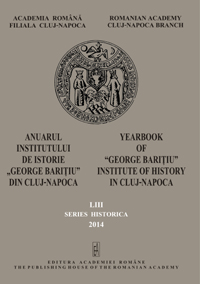Functioning of entry requirements to Romanian higher education. Case study: history studies (1948-1989)
Functioning of entry requirements to Romanian higher education. Case study: history studies (1948-1989)
Author(s): Matei GheboianuSubject(s): History
Published by: Editura Academiei Române
Keywords: history; admission; students; social structure; gender
Summary/Abstract: In the following, we analyze the admission requirements to higher education, specialization history, in the History Faculties of the Universities of Bucharest, Cluj and Iasi. In the early 1950s, admission to higher education and especially history specialization was drastically controlled, given that this area was considered as one ideological. During this period, in most cases, the „file” of the would-be candidate was more important than his/her level of knowledge. In 1957, the Council of Ministers adopted the Decision no. 1003 of July 10, which provided an increased number of students coming from families of workers and poor peasants up to the percentage of 70-75% and. Thus, the aforementioned returns the study of the "file" in the admission exam for the candidates. Gradually, the importance of the candidate’s "file" decreased, being replaced entirely by knowledge examinations. Thus, in the mid and late 1960s degree graduates of technical secondary schools, with baccalaureate exam or its equivalent, could present to the admission exams for higher education. In the 1970s and 1980s, for the admission competition to higher education concerning extramural courses and evening courses could register candidates that "prove that are employed", besides the aforementioned conditions. Starting with the academic year 1977/78, the Education Ministry decided to replace history with a double specialization “history – philosophy". This change was accompanied by the merger of the two faculties at the main universities of Romania (Bucharest, Cluj, Iaşi). This measure proved to be an uninspired decision, which pointed in a documentary made by the Ministry of Education in 1989.
Journal: Anuarul Institutului de Istorie »George Bariţiu« - Series HISTORICA
- Issue Year: LIII/2014
- Issue No: 53
- Page Range: 109-126
- Page Count: 18
- Language: English

